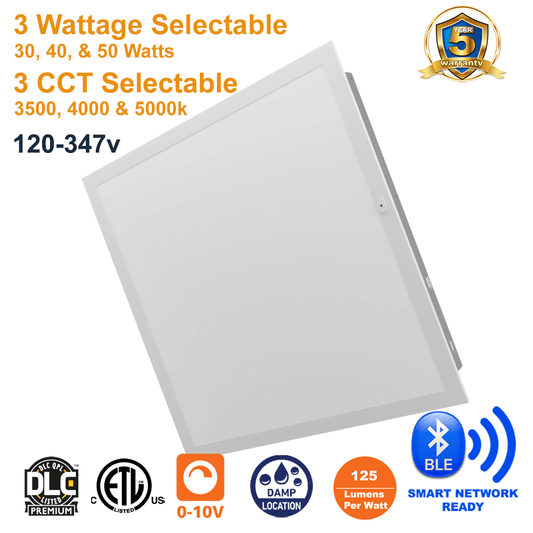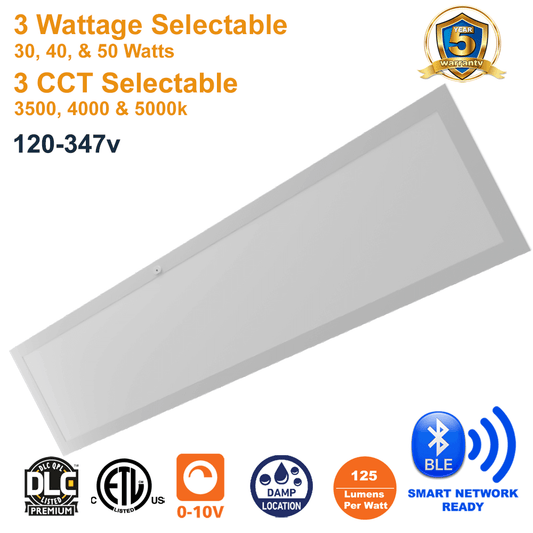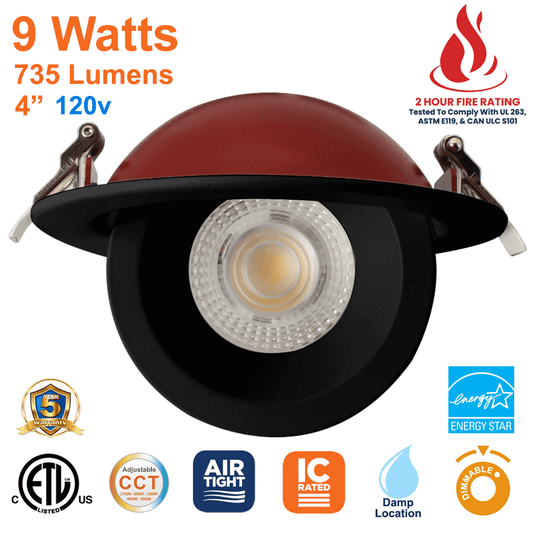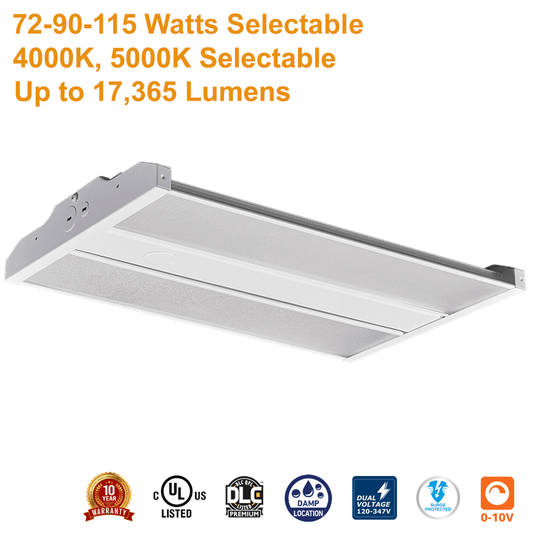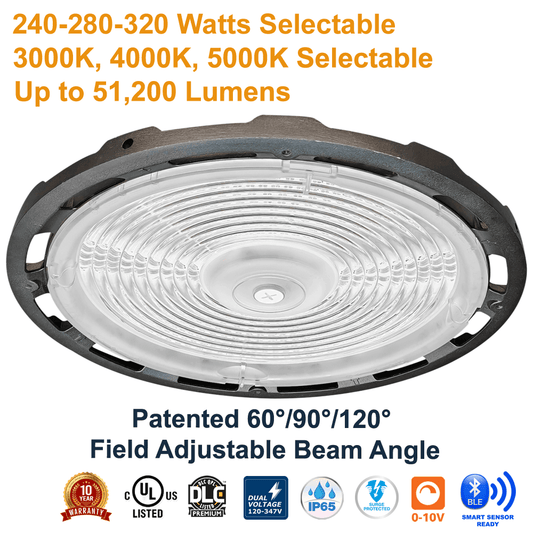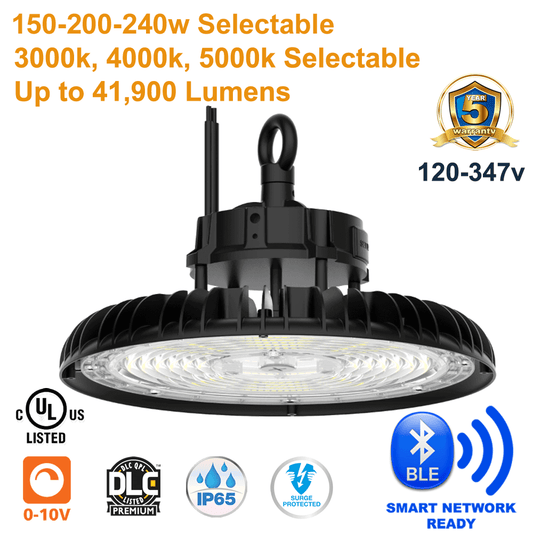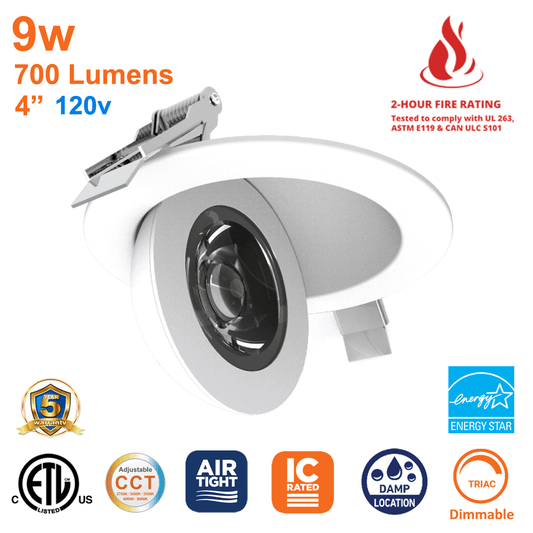Imagine an office space where the lights automatically dim as sunlight pours in through the windows, ensuring just the right amount of illumination throughout the day. Or a warehouse where the High Bays automatically dim when the doors are open and natural daylight floods in.
This is the magic of Daylight Harvesting, a technological marvel in the realm of LED Lighting. In our bustling world of Commercial LED Lighting and Industrial LED Lighting, understanding how we can harness natural light efficiently has never been more paramount.
What is Daylight Harvesting with Wireless Networked Lighting Controls?
At its core, Daylight Harvesting is a technique that captures and utilizes natural light, complementing it with artificial lighting, like LED Panel Light or UFO LED High Bay, to maintain a consistent level of illumination in a space. By integrating Wireless Networked Lighting Controls, with Daylight Harvesting capabilities, the system becomes a harmonious blend of automated decision-making and energy conservation.
“Daylight Harvesting, combined with today’s Smart LED Commercial Lighting solutions, is revolutionizing the way spaces are illuminated, focusing on energy conservation without compromising on lighting quality.”
The Benefits We Reap
The primary advantage of Daylight Harvesting is energy savings without sacrificing light levels. With the strategic placement of Daylight Harvesting sensors, the need for artificial lighting during daylight hours is significantly reduced. This not only leads to a decrease in power consumption but can also extend the life of your LED fixtures.
But the benefits don’t stop there. Spaces illuminated with natural light offer a more comfortable environment, leading to improved productivity and well-being among occupants. Plus, a study showcased in our LED Network Blog highlighted how such lighting setups can also reduce the carbon footprint of buildings.
How it All Works
It all starts with Daylight Harvesting sensors. These are placed strategically throughout a space, or mounted directly on an LED fixture, to detect the amount of available natural light. When daylight is ample, the Networked Daylight Harvesting Sensors automatically lower the light output of the LEDs. In contrast, during overcast days or as the evening sets in, the LED fixture’s lighting intensity is increased.
However, it's not as straightforward as on and off. The elegance of this system lies in its seamless gradation. Think of it as a sliding scale, where the lights respond in real-time to the external light conditions. For instance, if you’ve installed LED fixtures from our Warehouse Lighting Collection, they would gradually adjust their brightness, according to natural lighting conditions, ensuring there’s no sudden shift in ambiance.
Now, let's touch upon an essential aspect: the difference between an occupancy sensor and a Daylight Harvesting sensor. The former detects the presence of people in a space, turning lights on or off, or adjusting light levels accordingly. The latter, as we've discussed, measures the amount of natural light available and adjusts the LED lighting accordingly.
This article has begun its journey into the fascinating world of Daylight Harvesting, shedding light on its nuances and benefits. In the upcoming sections, we will explore the distinct types of Daylight Harvesting and explore the world of open-loop and closed-loop systems. So, whether you're a seasoned professional or just someone curious about the next big thing in Commercial Lighting and Industrial Lighting, stay tuned for more illuminating insights.
Open-Loop vs. Closed-Loop Daylight Harvesting: Which Reigns Supreme?
In the world of Daylight Harvesting, understanding the system types is crucial. Much like the intricate decisions behind choosing an Edgelit LED Panel Light over a Backlit LED Panel Light, the nuances of open-loop and closed-loop systems can make all the difference.
The Tale of Two Systems
Open-Loop Daylight Harvesting
Open-Loop systems utilize sensors placed externally, often on rooftops or building facades, to measure the ambient daylight. These sensors do not consider the light inside the space, focusing only on the external light conditions.
A classic example might involve sensors on a commercial building’s facade, which send data to the Lighting Control System. When there's abundant sunlight outside, the system understands that the interiors would likely be well-lit, and it adjusts the LED fixture’s light output accordingly.
Closed-Loop Daylight Harvesting
On the other hand, Closed-Loop systems have sensors placed inside the space they are meant to control. These sensors read the actual light levels within the room, which includes both natural and artificial light. If the natural light flooding in through windows provides enough illumination, the system will dim or turn off the LED lights or other fixtures to conserve energy.
"In the dance of light and shadow, Closed-Loop systems are the conductors, harmonizing natural and artificial light to the room's real-time needs."
Which is Better?
The answer lies in the specific requirements of the space. Open-Loop systems are generally simpler and often less expensive, making them a favorite for projects with tight budgets. They work well in spaces where light conditions are consistent and predictable.
However, for areas where internal and external light conditions can vary significantly—think of spaces with large blinds or those that see frequent changes in interior layouts—Closed-Loop systems are the way to go. They provide a more accurate representation of the room's lighting needs, adjusting Commercial Lighting fixtures in real-time for optimal energy efficiency and comfort. In addition, today’s Networked Lighting Controls have dramatically decreased the cost of Open-Loop systems.
Beneficiaries of Daylight Harvesting Savings
Everyone benefits from the energy savings of Daylight Harvesting! However, larger commercial spaces, like open office spaces, warehouses, atriums, and large retail stores, often see the most significant cost reductions due to the sheer volume of light fixtures involved. But that's not all. By reducing the strain on artificial lights, Daylight Harvesting also potentially extends the life of UFO LED High Bay, LED Panel Lights and other similar fixtures.
Spaces that Shine the Brightest
While almost any space can gain from Daylight Harvesting, areas with ample natural light stand to gain the most. As mentioned earlier, open-plan offices, atriums, and spaces with large windows or skylights are prime candidates. Such areas often have the challenge of managing glare and excessive brightness, problems that Daylight Harvesting can adeptly handle.
In our concluding segment, we'll look deeper into the benefits of Wireless Networked Lighting Controls beyond Daylight Harvesting. We’ll also explore the ways these controls can further bolster your energy savings and light up your commercial and industrial spaces in the smartest ways possible. Stay connected!
Beyond Daylight Harvesting: The Bright World of Wireless Networked Lighting Controls
Harnessing natural daylight to reduce energy consumption is truly revolutionary, but it’s just the tip of the iceberg. The realm of Wireless Networked Lighting Controls is vast, providing numerous pathways to optimize your lighting setup and maximize savings.
Why Wireless Networked Lighting Controls?
Seamless Integration
Gone are the days of dealing with cumbersome wires and complex setups. Wireless controls can be seamlessly integrated into existing setups, making them an excellent fit for both new installations and retrofit applications.
Real-time Monitoring and Control
Being able to monitor the lighting in real-time means you can make instant adjustments. This ensures that lighting levels are always optimal, enhancing both energy savings and user comfort.
Adaptability
As your space evolves, so can your lighting. Wireless controls offer the flexibility to reconfigure your lighting setup without the headaches of rewiring.
The Occupancy Sensor vs. The Daylight Harvesting Sensor
While both types of sensors play crucial roles in modern Commercial LED Lighting systems, it's essential to distinguish between them.
-
Occupancy Sensors: These sensors detect the presence or absence of people in a space. When no movement is detected for a predetermined time, the lights dim or turn off—perfect for conference rooms, restrooms, or storage areas where usage is sporadic.
-
Daylight Harvesting Sensors: As previously discussed, these sensors measure the amount of natural light in a space and adjust the LED light fixtures accordingly.
"While an occupancy sensor understands if the light is needed, the Daylight Harvesting sensor comprehends how much light is necessary."
Expand Your Savings Beyond Lighting
The true beauty of Wireless Networked Lighting Controls lies in its potential to integrate with other building systems. Think HVAC and security. When your lights know there's no one in the room, why should the air conditioning be running full blast?
Moreover, with the power of Bluetooth Low Energy revolutionizing Networked Lighting Controls, the possibilities for interconnectivity, automation, and optimization are boundless. In the next few years, future-proof Networked Lighting Controls, like the ones from Keilton LiteTrace, will continue to offer more an more integration and monitoring capabilities.
Conclusion
Understanding Daylight Harvesting is a leap towards sustainable and efficient Commercial Lighting. Yet, when combined with the broader advantages of Wireless Networked Lighting Controls, the horizon of possibilities stretches even further. From the lower light output of an LED Downlight to the high light output of Warehouse Lighting, every LED fixture's potential is maximized, ensuring spaces are not just well-lit but smartly lit.
By utilizing Daylight Harvesting in a Wireless Networked Lighting Controls system, your commercial and industrial spaces will shine with intelligence and efficiency.








